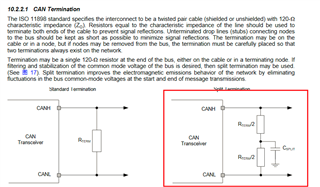Hi TI Team,
Questions about the choice of R and C values in the application of Split Termination mode of TCAN1042VDRQ1 chip:
The selection range of the resistance value of R. In some application scenarios, the resistance value is chosen as 1.3K instead of 60Ω. What is the reason?
What is the capacity of C?


